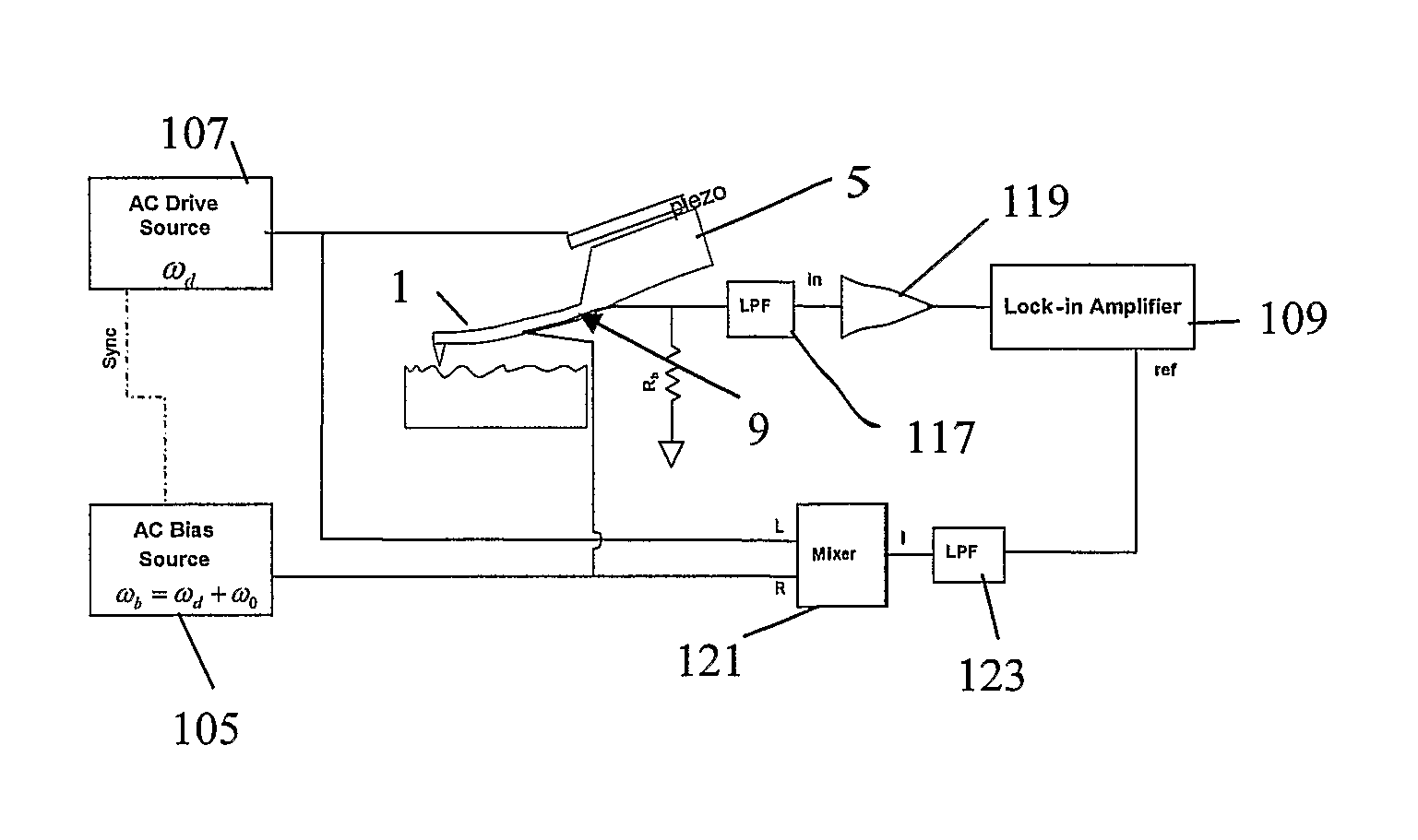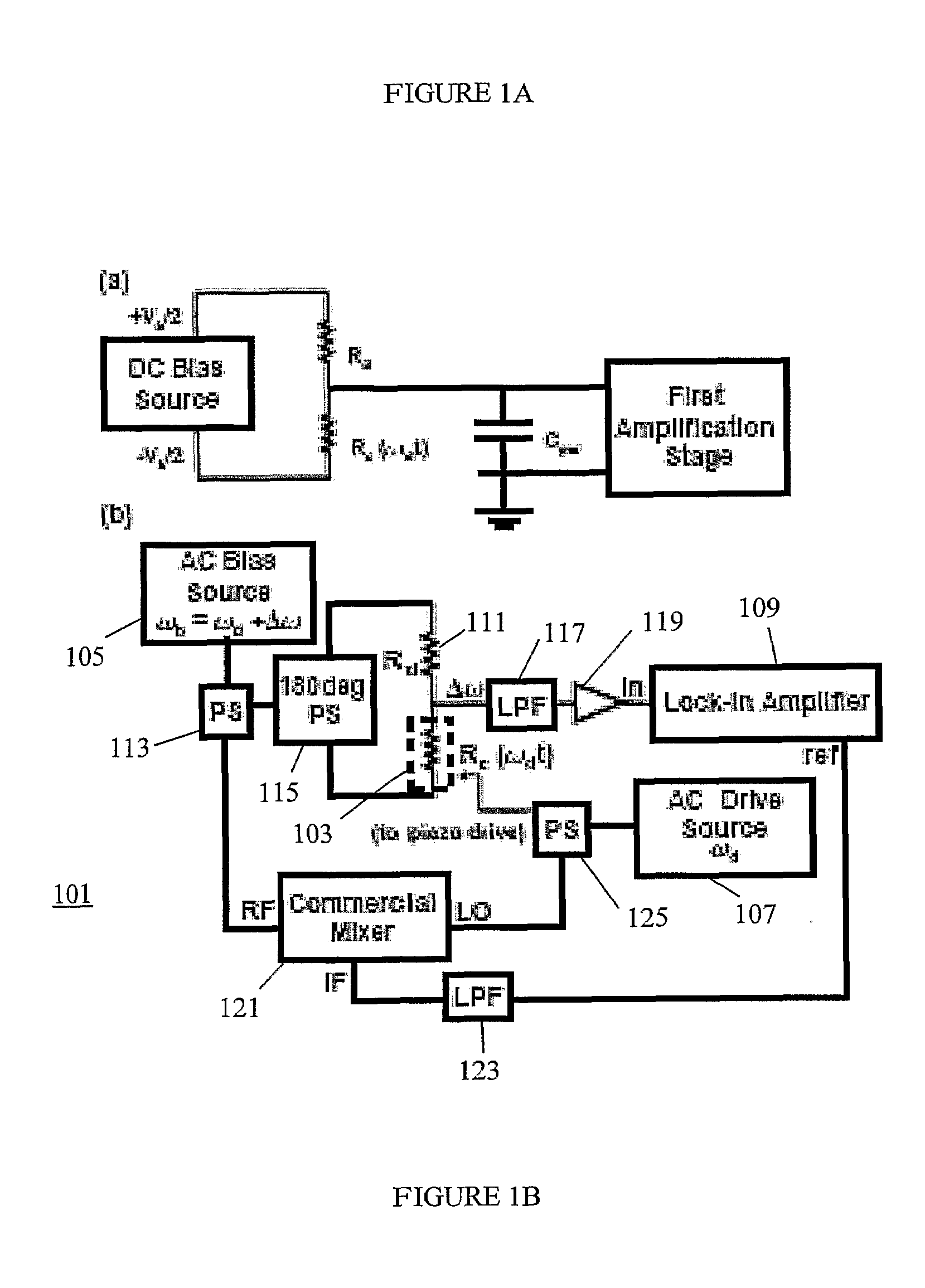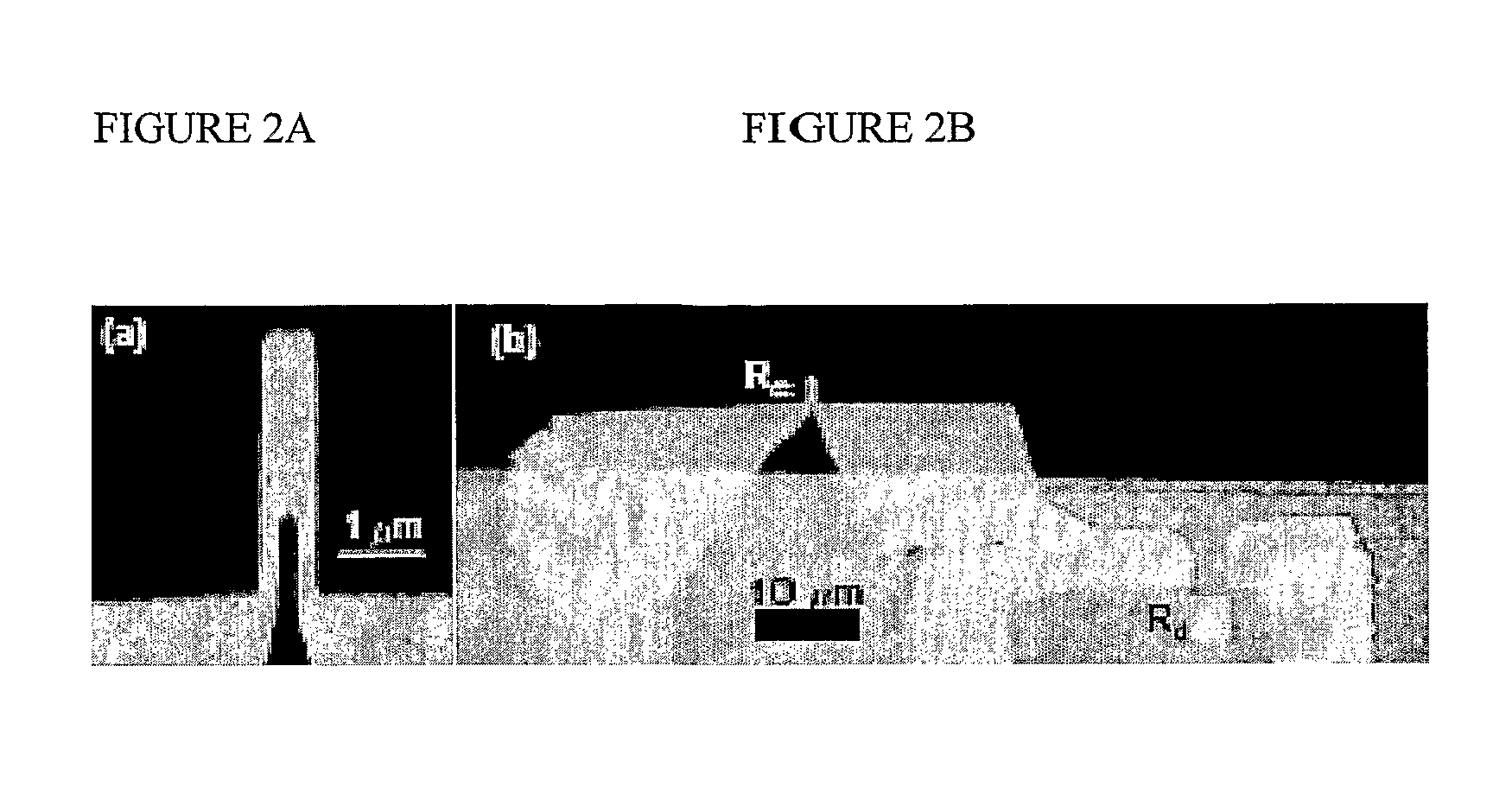Detection of resonator motion using piezoresistive signal downmixing
a piezoresistive signal and motion detection technology, applied in the field of microelectromechanical systems, can solve the problems of difficult to achieve high quality, frequency-dependent signal attenuation at mhz frequencies, and significant limitation of attenuation to achieve the effect of high quality
- Summary
- Abstract
- Description
- Claims
- Application Information
AI Technical Summary
Benefits of technology
Problems solved by technology
Method used
Image
Examples
first embodiment
1. First Embodiment
[0028]In a first embodiment of the invention, the present inventors have developed a system and method for measuring RF-range resonance properties of nano- or micro-mechanical devices which comprise entire or parts of micro- or nano-electro-mechanical systems (MEMS and NEMS, respectively), with integrated piezoresistive strain detectors serving as signal downmixers. Preferably but not necessarily, the piezoresistive elements comprise thin film elements and the technique takes advantage of the high strain sensitivity of thin film piezoresistors, while overcoming the problem of RF signal attenuation due to a high source impedance. The technique also reduces the effect of the cross-talk between the detector and actuator circuits. The method also allows a way to circumvent the problem of impedance mismatch and extends the usability of low-frequency, high-input-impedance preamplifiers and other equipment.
[0029]In one aspect of the first embodiment, the method includes ...
first example
A. First Example of First Embodiment
[0044]In a first example of the first embodiment, the downmixing scheme is tested using high-frequency piezoresistive cantilevers as the NEMS device 103. The cantilevers are fabricated from silicon-on-insulator (SOI) wafers, where the top Si layer consists of 80 nm Si plus a 30 nm layer of boron-doped p-Si to act as the piezoresistive strain sensor (i.e., a semiconductor piezoresistive film). The cantilevers were fabricated in a manner similar to that of described in J. A. Harley and T. W. Kenny, Appl. Phys. Lett. 75, 289 (1999), where a backside KOH etch suspends the top Si layer as a membrane, and a combination of electron beam lithography, liftoff, and fluorine / chlorine-based plasma etching steps forms the cantilever from the membrane. A typical cantilever is shown in FIG. 2A. Cantilever lengths ranged between about 2-3 μm and widths were approximately 700 nm. For example, the exemplary cantilever shown in FIG. 2A is 3.2 microns long, 700 nm wi...
second embodiment
2. Second Embodiment
[0064]In a second embodiment of the invention, a method of making nanoscale scanning probes is described. It should be noted that the method of the second embodiment may be used to make the resonator of the first embodiment. However, the resonator of the first embodiment may also be made by any other suitable method. Furthermore, the method of the second embodiment may be used to make a probe that is not used in the system and method of the first embodiment. Still further, while a cantilever shaped scanning probe is described, other resonators and sensor / imaging devices described above with respect to the first embodiment can be made instead.
[0065]Preferably, the probes of the second embodiment are used in NEMS adapted for scanning probe microscopy of biological samples. These probes preferably, but not necessarily fall into nanoscale size regime described above. For example, the thickness of the cantilever can be as thin as 30 nm, such as 30 nm to 150 nm. The wi...
PUM
 Login to View More
Login to View More Abstract
Description
Claims
Application Information
 Login to View More
Login to View More - R&D
- Intellectual Property
- Life Sciences
- Materials
- Tech Scout
- Unparalleled Data Quality
- Higher Quality Content
- 60% Fewer Hallucinations
Browse by: Latest US Patents, China's latest patents, Technical Efficacy Thesaurus, Application Domain, Technology Topic, Popular Technical Reports.
© 2025 PatSnap. All rights reserved.Legal|Privacy policy|Modern Slavery Act Transparency Statement|Sitemap|About US| Contact US: help@patsnap.com



